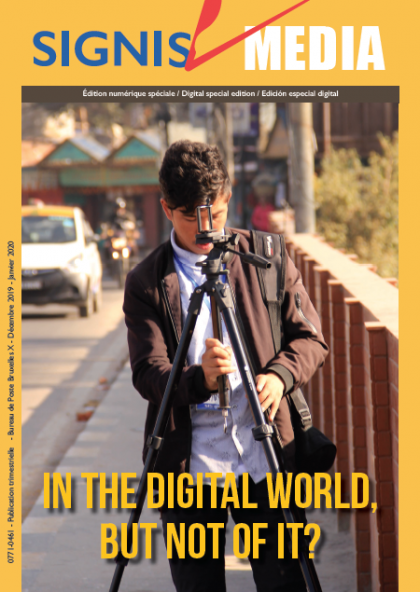What are some of the challenges today to educate in communication.

Article published in Signis Media -February 2020
by: Carlos Ferraro
The answer is the daughter of the Internet.
Interconnectedness has made possible and naturalized a culture that we may well call digital.
It is within it that responsible educators and communicators must assume training in order to objectify within their own culture how its structure and results work.
A large percentage of humanity (technological gap through) is involved in so-called social networks. Written newspaper, TV, radio and cinema, until not so long ago called analog media developed independently.
From the appearance of interconnection technology, what we call digital convergence emerges, all those means mentioned today coexist, hybridize on a single screen. The most widespread in use: the smartphone. In this tiny device, the telephone, the clock, the alarm clock, photo camera, video camera, flashlight, newspaper, book, calendar, computer and console are also integrated. etc. Everything in one device. This is what we call technological convergence. In addition, many applications allow editing textual and audiovisual content for the press, radio television, even the Internet. This is a true cross-platform.
Multimedia or content convergence
The combination of two or more linguistic codes, whether textual, visual or sound, take us to the widest point of convergence in the world, where audio, images and hypertext converge to give physical form to what we know as an audiovisual product.
Our main concern as educators is the values and therefore the content. It is worth asking what are the laws that support, on different continents, the regulation of communication flows. How are the values of freedom of expression, promotion of cultural diversity, data protection, media hegemony, etc.
Are regulatory and technological cooperation organizations and / or content needed? Does it reach the existence in the style of the Directive of Social Communication Services 2010/13 of the European Union on which audiovisual services depend in its 105 recitals?
Is the control of conglomerates effective, that is, of the concentration of communication companies that have expanded horizontally (the same company can transmit content through radio, newspaper, television and the Internet)? Or they can also do it vertically, (a clear example is Netflix that is making its own productions, thus avoiding depending only on production companies such as Disney, Fox, WB or others, which provide it with material from series and movies). In this way Netflix goes from being a content distributor to creator of its own.
We wonder about the dangers of business concentration for users, or viewers: it is surely the risk of homogenization and the loss of pluralism. Can the viewer contrast information if there is only one means of communication?
Educating citizens today is making them aware of how the culture in which they are embedded works, encouraging them to reflect and train in order to be a free subject in their choices and sensitive in human values.






